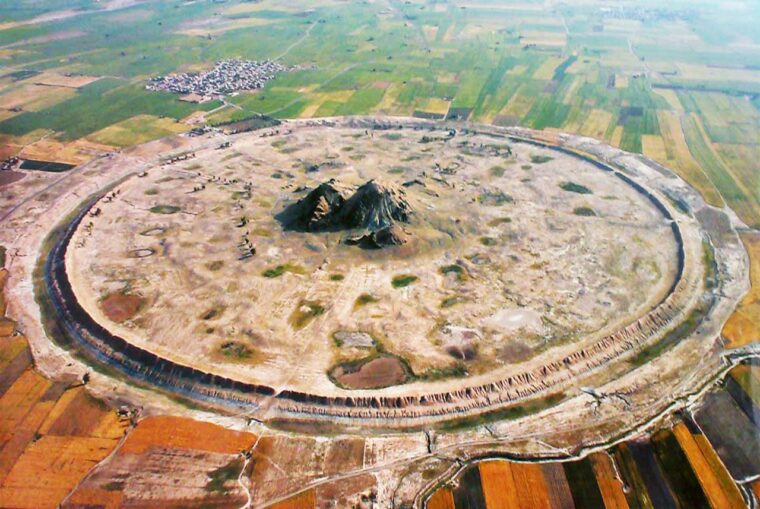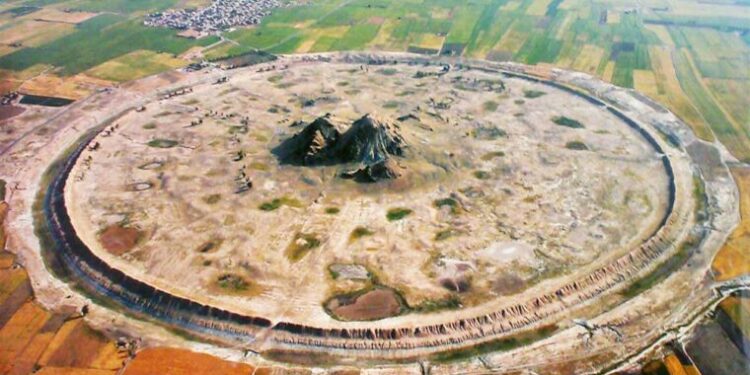The ruins of Darabgard (Darabjerd), an ancient historical city in Fars province, Iran, are located six kilometers southwest of the current town of Darab. Darabgard, mentioned in extremely early literary works of this country, was one of the Achaemenid Empire’s oldest and most famous cities.
The city was founded by Darius the Great (550–486 BC), the third king of the Persian Achaemenid Empire (550–330 BC), according to tradition. Other medieval accounts, however, say that Dara, an Achaemenid king or one of the Frataraka “creator of fire” or “keeper of fire” rulers of Arsacid Persis, or even Darius III, the final Achaemenid King of Kings of Persia, could have founded the city.

However, the design of round towns has a long history in Persia. Ecbatana, the Median capital in the late eighth century BC, was planned as a circular system, enclosed by seven rings of walls, according to Herodotus (I. 98). Several circular cities, like Hatra and Darabgard, have been notable since the Parthian time.
Darabgard is one of the historic Persian cities with a circular design and four gates, as is Ecbatana in western Iran, which was chosen as the Medes’ capital by a Median king, Deioces, in the late 8th century BC, according to Herodotus.
At the summit of the dome-shaped peak was the governmental fortress. A high circular rampart, as well as a deep trench, protected this city. Today, some remnants of the citadel may be found in the city’s surroundings, including earthworks built in a circle around an isolated rock and a massive bas-relief carved on the vertical face of a rock depicting the triumph of the Sasanian ruler Shapur I against the Roman emperor Valerian in 260 AD.
Three strongholds can also be found north of the Darabgard archaeological site. A massive conical wall (once more than 10 meters high) made of stone, lime, and clay surround this ancient city. The wall, which is just 7 meters high now, has been destroyed by erosion, but the structure has survived for over 2,000 years.
The old city of Darabgard’s salt dome is surrounded by a round wall that stands in the middle of the huge, verdant plain of Darab, yet was originally the ancient town’s core.
Darabgard was an important capital city of Darabgerd-Khurreh during the Sasanid period (considered the pinnacle of ancient Iranian civilization) and was well-known for the production of jasmine oil, textiles, famous carpets, and rare mineral salts.
However, Darabgard’s most famous and lucrative product was a highly distinctive bituminous mineral oil, which was most likely obtained in the city or neighboring mountains and utilized as medicine.
Other ancient texts claim that Darabgard’s initial shape (which is thought to be over 2,500 years old) was triangular rather than round. Archeological evidence, on the other hand, reveals that Darabgard was neither perfectly mathematically perfect nor did it have a concentric or radial street system. Darabgard was fully abandoned in the 12th century.























